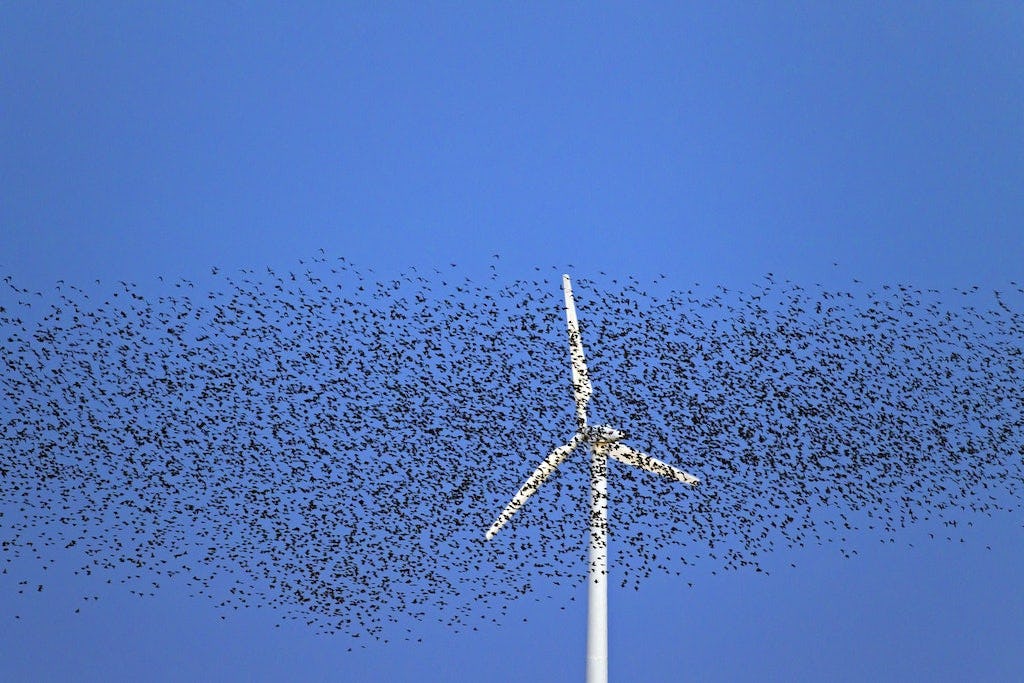IoT Application and Radar Protect Birds at Maasvlakte-2 Wind Farm
A bird radar developed by Robin Radar was put into operation at Maasvlakte-2 Wind Farm last March. The radar, in conjunction with the IoT platform developed by Conclusion for Eneco, safeguards birds in the area. By collecting data on the avian presence near the wind farm and automatically responding to it, the wind turbines can proactively shut down. This substantially reduces the number of bird casualties resulting from collisions with the turbines, thereby positively impacting biodiversity.
Client
Eneco

Market
Energy & Utilities
Date published
26 april 2023

At Maasvlakte 2 Wind Farm, developed by Eneco on behalf of Rijkswaterstaat, the radar aids in mitigating bird collisions with the wind turbines. Integrated into the wind farm's control system, the radar detects birds, including large flocks of migratory birds and local avifauna. When they approach too closely, the wind turbines can be automatically halted.
Marin van Regteren, Marine Ecologist at Eneco, explains: "The 3D bird radar continuously records the flight movements of birds on the wind farm's northern side. The radar transmits its data to an IoT platform, which subsequently issues signals to halt the entire wind farm or individual turbines. This platform encompasses a decision module that applies location-specific decision rules and threshold values for shutdown. If the bird radar detects an exceeding of a predetermined threshold (e.g., a certain number of birds at rotor height), the decision module sends a shutdown signal to one or more turbines."
By formulating the threshold values and shutdown rules in a unit measurable by the radar, the IoT solution can verify compliance with the shutdown conditions. Marin further adds: "This logic is also linked to weather condition data, ensuring that wind turbines are only halted when the threshold value is exceeded and predefined weather conditions are met. For instance, when it rains, bird presence is lower, making shutdowns less critical due to the reduced impact. The system is designed to cater to both migratory birds and local (breeding) avian species."
Active Bird Protection for Wind Farms using digital technology
Globally, bird detection systems employing radars are still scarce. The use of radar imagery to safeguard birds at wind turbines represents a pioneering development. Standard protocols for wind turbine configuration are yet to be established. When initiating turbine shutdowns, real-time bird flight predictions are taken into account, along with the stability of the power grid in the Netherlands. Moreover, the radar collects data on bird migration patterns, facilitating timely adjustments in wind turbine energy production planning.
Marin van Regteren comments: "Minimizing potential negative impacts on local and migratory bird populations was a requirement set forth by Rijkswaterstaat during the permit granting process for the construction of Maasvlakte 2 Wind Farm. Along the Dutch coast, substantial bird migrations occur during both spring and autumn seasons. Maasvlakte 2 represents a significant stride towards reducing the impact on birds while conducting comprehensive research."
Standard Components Aid in Rapid Implementation
Peter Dreschler, Change Lead IoT at Eneco: "The beauty of it is that we were able to realize this shutdown feature fairly quickly using existing components. We already have the capability to process external data, such as radar data, rapidly. We have a decision module that determines which wind turbines need to be shut down based on the data, and we have a real-time connection to the wind farms for turning the turbines on and off to manage the power grid (curtailment). So, all the ingredients were already in place. For us, it was simply a matter of cleverly combining the existing building blocks."
Applicable to New Wind Turbine Farms
In the coming years, many wind farms will be added in our country. Wind energy in the Netherlands and the North Sea is an attractive source of sustainable energy. With the bird radar, we ensure that sustainable energy does not come at the expense of ecology. Based on the lessons learned from this initial implementation, we are further developing a standardized solution for new and existing parks.
Real-Time Data Processing as the Core for Decision-Making
Frank Schutrops, IoT architect at AMIS Conclusion: "Timely access to accurate data is crucial, not only from an ecological perspective but also for making well-informed decisions. Our platform facilitates real-time data processing and makes automated decisions for individual wind turbines within seconds. As a result, we can provide optimal protection to birds without significant compromises to electricity production for the Netherlands. This serves as a valuable addition to the existing IoT platform, which has already demonstrated a significant positive impact."
Combining Data Unlocks Endless Possibilities
Peter Dreschler: "This application demonstrates that we can quickly realize new applications using the available data and IoT connections. Applications that, like this ecological protection, were not imaginable beforehand. Through the practical, component-based architecture implemented by AMIS Conclusion and Conclusion Mission Critical, such concepts are highly feasible. We are already exploring new applications. The possibilities are endless."

Robbrecht van Amerongen